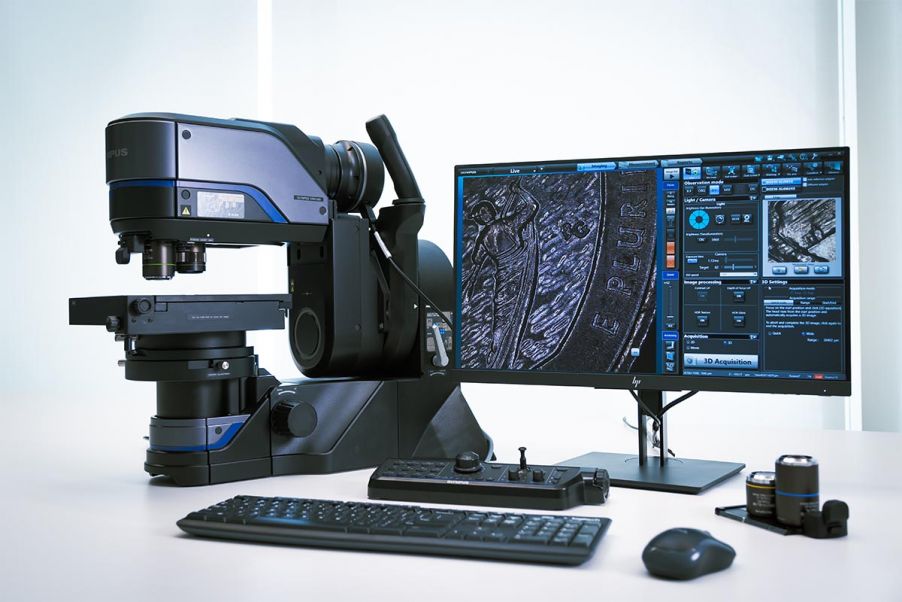Digital microscopes have revolutionized the world of microscopy, offering advanced and convenient features that make it easier than ever to capture, review, and share images of your samples. However, with a wide range of options available, finding the best digital microscope for your specific needs can be daunting. This guide walks you through the essential factors to consider when selecting
the ideal digital microscope for your work.
6 Key Factors to Consider When Choosing a Digital Microscope
When evaluating digital microscopes, it’s crucial to understand the key features that contribute to their performance and usability. Here are some important aspects to consider:
1. Magnification Range
Determine the range of magnification that suits your application requirements. Digital microscopes can provide a wider magnification range with zoom options compared to optical microscopes, enabling detailed examination of various samples.
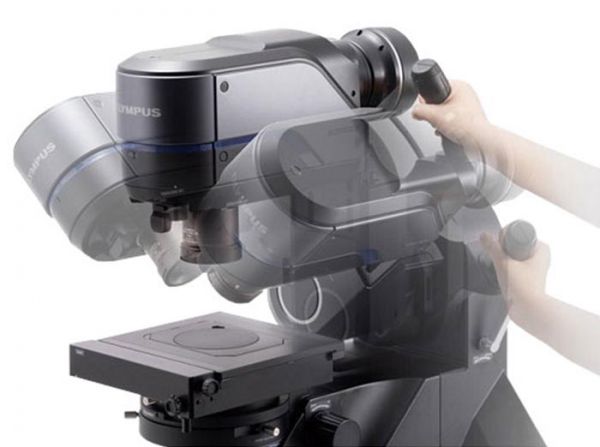
The DSX1000 digital microscope has a flexible tilting frame and a broad magnification range of 23X to 8220X, enabling you to see the whole picture with one system.
2. Image Capture and Storage
Look for a digital microscope that offers easy image capture and storage options. The ability to save images directly to a computer or external device enables efficient documentation and analysis.
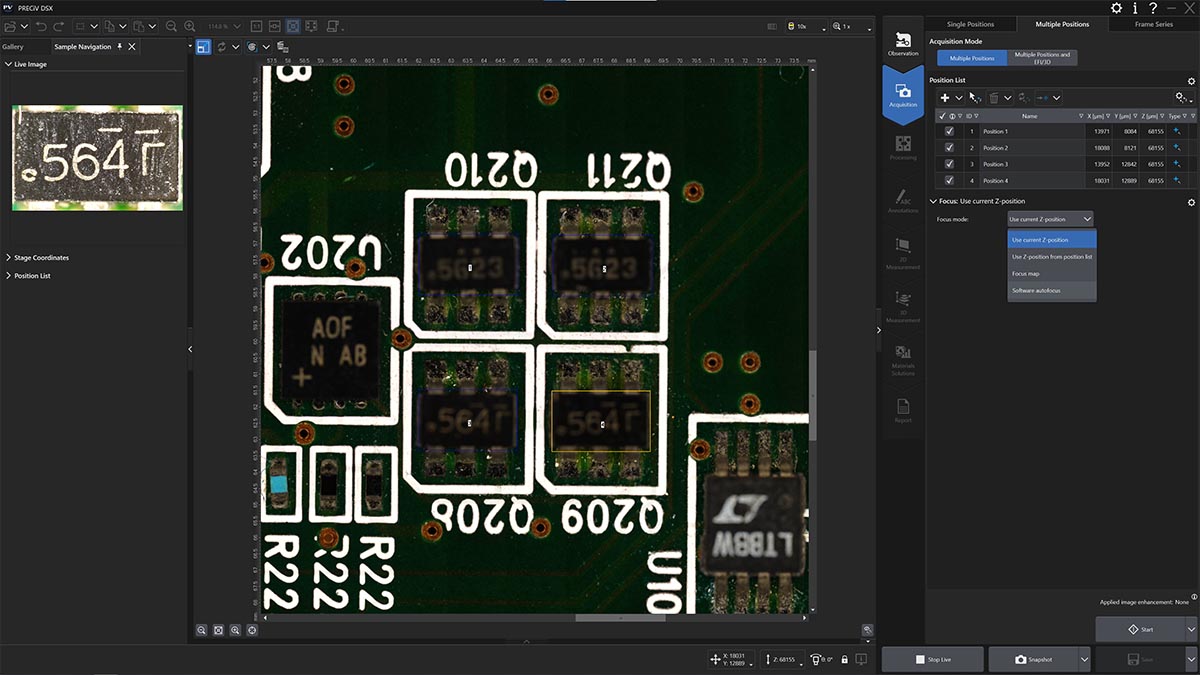
Image of a circuit board, showing an example of multiple position acquisition in PRECiV™ software for the DSX1000 digital microscope.
3. Connectivity and Software
Consider the connectivity options available, such as USB or wireless capabilities, and the compatibility of the microscope with different operating systems. Additionally, explore the accompanying software features, such as image editing, measurement tools, and video recording capabilities, as they can enhance your workflow.
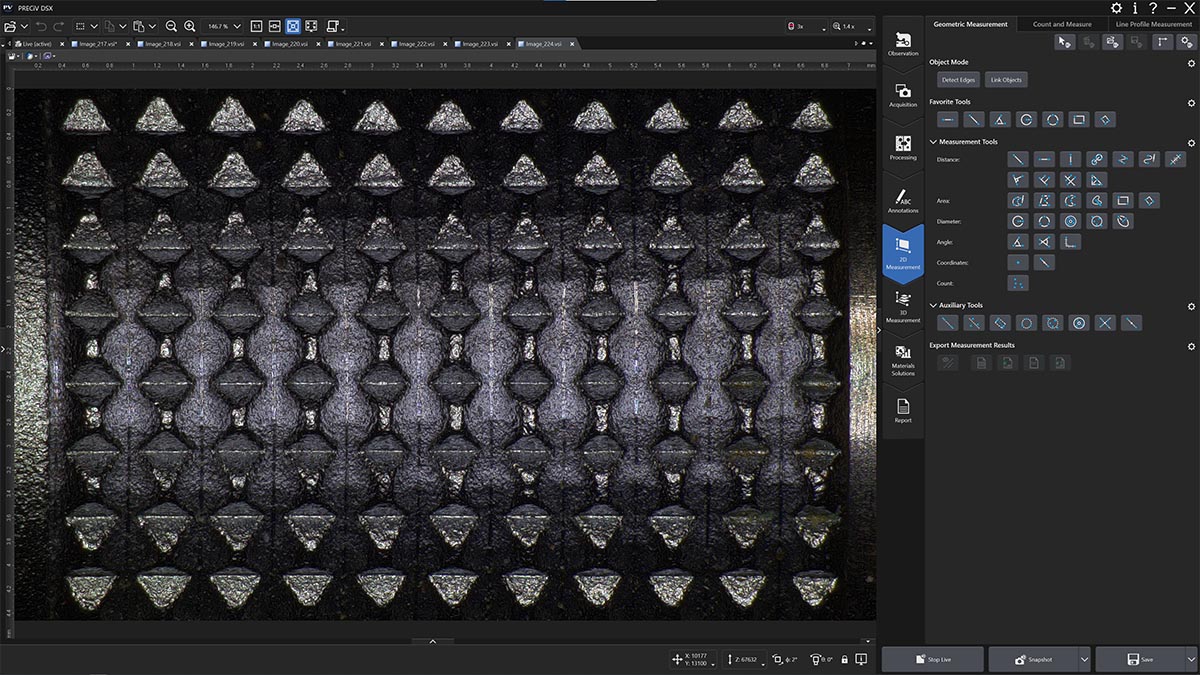
Two-dimensional measurement of a cable’s grip shield using PRECiV software for the DSX1000 digital microscope.
4. Sensor Type and Resolution
Image quality and resolution are critical factors when selecting a digital microscope, which is why systems can range in price. A high-resolution sensor is essential for capturing detailed, sharp images. Look for microscopes with sensors that offer sufficient pixel count to deliver clarity and precision in your observations.
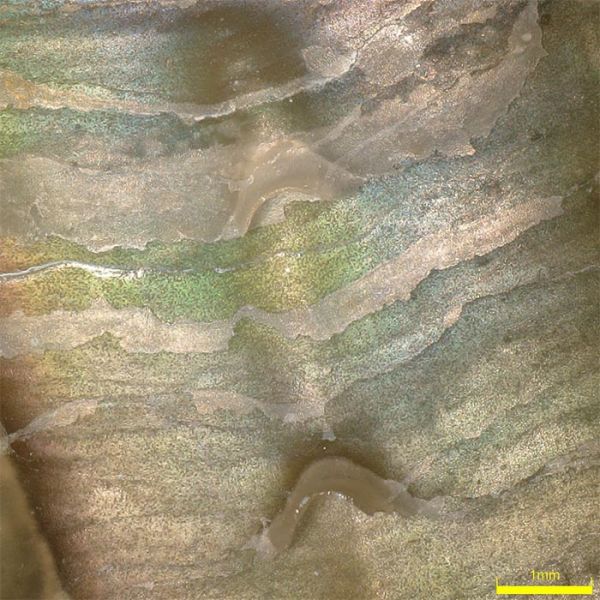
The DSX1000 digital microscopes provides clear and precise images of a broad range of samples, from seashells (shown here in MIX observation) to semiconductor wafers.
5. Optics and Lighting
Quality optics and proper lighting play a vital role in image clarity and contrast. Consider microscopes with advanced optical systems, anti-glare features, and options for angled lighting to improve image quality. Higher quality digital microscopes have optical resolutions high enough to take advantage of camera resolution while still providing long working distances. They also enable multiple observation methods using lighting control.
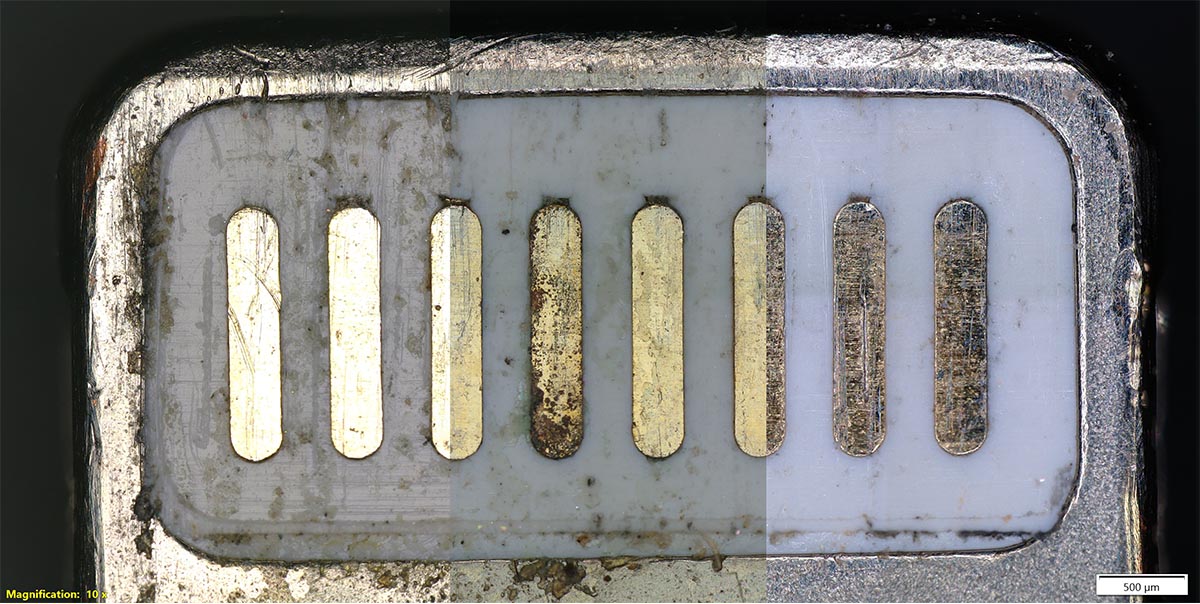
Image of a mobile phone charger tip with an overlay of different illumination methods on the DSX1000 digital microscope.

Images of the US dollar in brightfield (left) and ultraviolet (UV) observation (right) on the DSX1000 digital microscope.
6. Image Processing Features
Some digital microscopes provide advanced image processing features like high dynamic range (HDR) and depth-of-field stacking. These features enhance image quality by improving contrast, color accuracy, and depth perception. These advanced features enable you to capture images that would traditionally be too difficult, time consuming, or simply not possible. They can also enable work to be completed in record time.

Image of a mobile phone charger tip with different processing filters on the DSX1000 digital microscope.
Zooming In on the Best Digital Microscope for Your Work
Selecting the best digital microscope for your application requires careful consideration of features and image quality. By understanding the essential aspects of digital microscopes and evaluating options based on your specific needs, you can make an informed decision.
Remember to explore reputable brands that offer excellent image processing, versatility, user-friendly interfaces, and robust service and support. Compare features that are compatible with your application to find the best fit. Embark on your digital microscopy journey armed with knowledge so you can make the most of this powerful tool to unlock new insights in your research, analysis, or industrial processes.
For further guidance on selecting a digital microscope, reach out to our team! We’re always happy to answer any questions or schedule a digital microscope demonstration.
